Taking Robe and Bowl

Peregrina's Journey
Peter and Margie Benziger
Sat 10 Mar 2012 03:22
Taking Robe and Bowl
Almost 95% of Thai people are
Theravada Buddhists. This form of
Buddhism came to Thailand from Sri Lanka during the Sukhothai Period between
the 13th and 15th centuries and has been practiced here
ever since. Buddhism, which is based on the
three principals of existence - dukkha
(stress), anicca (transience) and anatta ( no permanent ‘soul’) - was initially
considered heretical and a challenge to India’s Hindu belief of an eternal,
blissful self.
Gautama, an Indian prince who
turned ascetic in his search for an end to suffering, endured many years of
extreme sacrifice and poverty before he became “enlightened” or “awakened” to
the realization that the ultimate state of Buddhism is “Nirvana”, which literally means the “blowing out” or extinction of
all grasping or suffering (dukkha)
and the end of the on-going cycle of “rebirths” that signify human existence. He became known as Buddha and his teachings can
be summed up in the Thai proverb “Tham
dii, dai dii, tham chua, dai chua.”
Good actions bring good results; bad actions bring bad results.
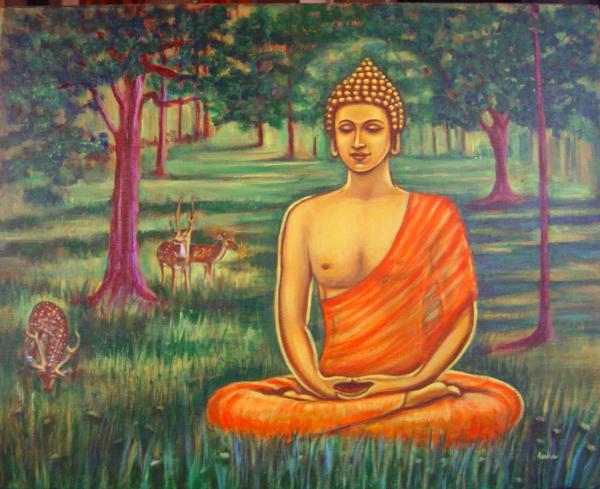
As I understand it, most Thai
Buddhists never expect to reach “Nirvana.” Their goal is to live a good life and
accumulate enough “merit” to allow them to achieve a “better” existence They
do this by performing worship at their local wat, (temple) making donations and
feeding monks.
That’s a lot of feeding to do
as there are over 32,000 monasteries in Thailand and almost 500,000 monks! In fact, every Thai male is encouraged to
become a monk for at least some period of his life and the ubiquitous
appearance of these bald-headed, orange-robed “Sangha” (Buddhist Community) members is probably the most enduring image
of Thailand in my mind.
Let me tell you about our
very up-close and personal experience attending the ceremony associated with
becoming a monk, known as Phra Phiksu
in Thailand.
We were fortunate to be
visiting our friends Alan and Noi in Prae, Thailand, 3 hours outside of Chaing
Mai, last month when the nephew of Noi’s sister-in-law entered the Sangha as a novice, or naen in Thai.
Here’s Margie on the grounds
of the wat in Prae.
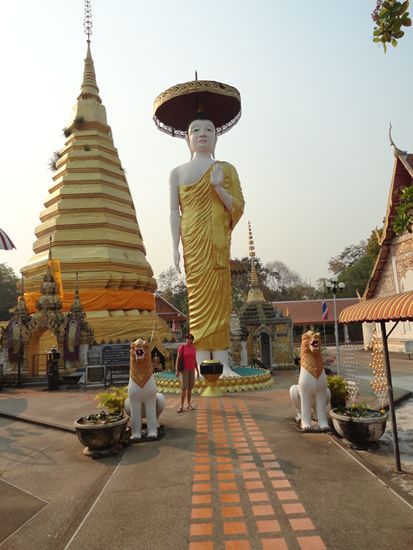
The young man’s English
nickname is translated as “Jack” and he is shown here with Noi just a few
minutes before the ceremony was to begin.
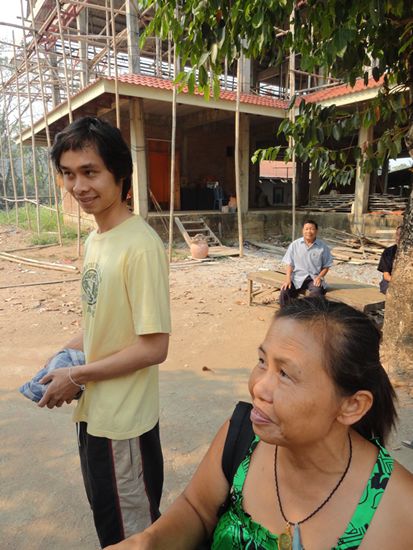
Jack is 24 years old and works
for the Department of Forestry but, like many young men, he takes his devotion
to Buddhism seriously and wanted to honor his family - and earn great merit for
both them and him - by “taking robe and bowl” and living in a Buddhist wat for
30 days.
In the past, young men would
spend 3 months on average living as monks in the wat earning “merit” but now,
it can be a little as one week.
Normally, this service comes right after finishing school or just prior
to a major career move or marriage.
Of course, many monks are
called to join the Sangha by a Higher
Power and are ordained for a lifetime and some boys as young as 10 years old
join the monastery with the encouragement and blessing of their family. Orphans sometimes have the option of service
to the Buddhist community where they can receive the love and support of their
fellow novitiates. Whatever reason
brings them to the monastery; it is a huge honor which calls for celebration.
The official ceremony lasts
for at least two days and sometimes longer.
It begins with family and friends gathering at the local wat where the
young man has his head shaved and body washed, first by the family and friends
and then by one of the monks from the temple.
Below, you’ll see photos of
Jack getting his hair cut by all the members of his family as well as the
invited guests. Standing out among the
crowd was our little group of six sailors from the USA and UK. All of us were strangers to the family -
collectively described as “farangs”
or foreigners – but we were enthusiastically encouraged to become part of the
ceremony. We were all invited up to
clip a piece of hair which the officiating monk collected in a lotus leaf that
would be saved for the family to keep as a remembrance of this special day.
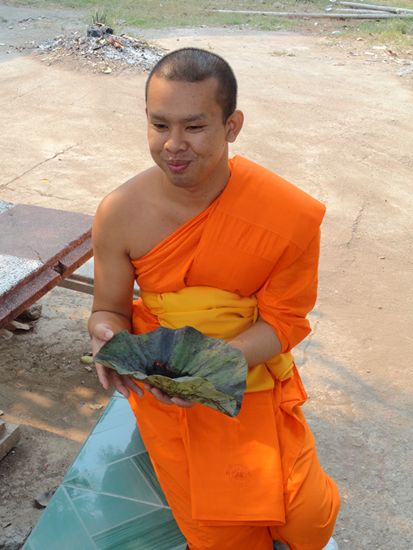
After we all took a snip, the
monk fine-tuned the job with an adjustable razor and NO shaving cream! We all cringed as he passed that razor all
over Jack’s head, including his eyebrows (!) but not scratch or a nick or a
drop of blood appeared anywhere! He had
a very steady hand and a calm, compassionate nature, you could tell…
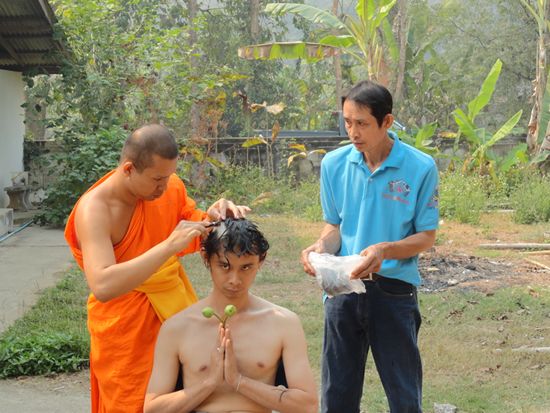
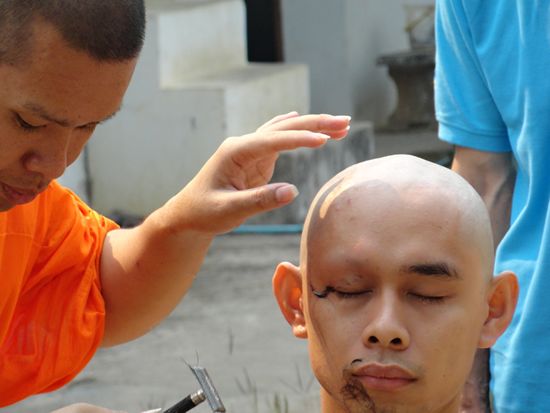
After the haircut, everyone
was invited to cleanse Jack with water.
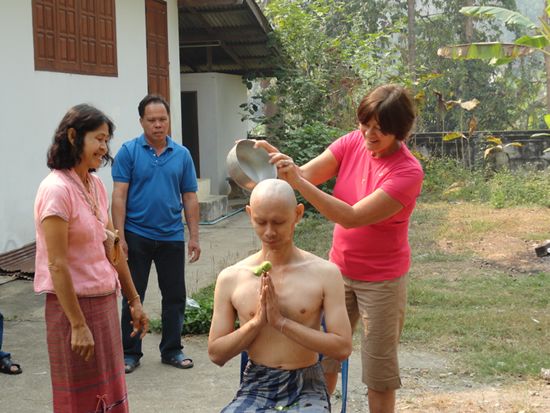
Then, his mother helped him
into the white robes he would wear on this day and throughout the celebrations
that would go late into the evening.
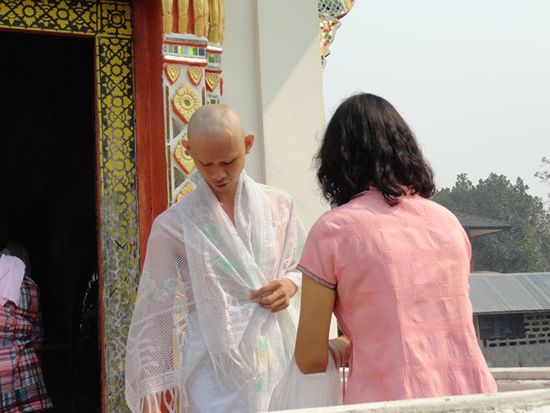
We sat for the welcoming
service in the Temple. (Jack is on the
right)
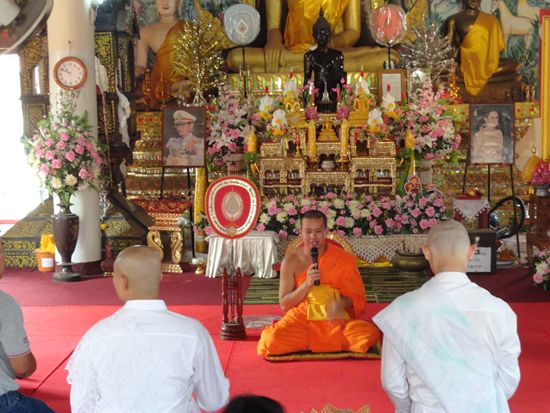
And, then we moved on to
Jack’s family home nearby for a fantastic lunch and much singing and
celebrating.
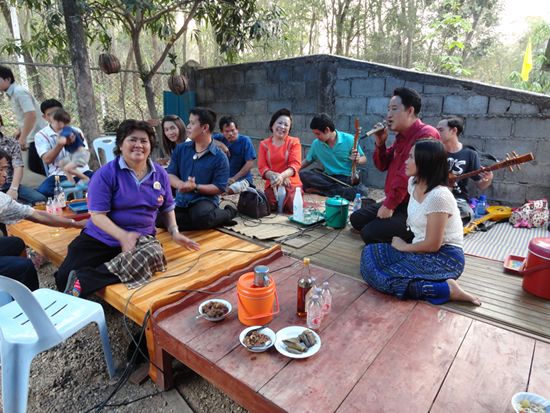
All the while, Jack sat on a
dais of honor receiving gifts and messages of support from family and friends.
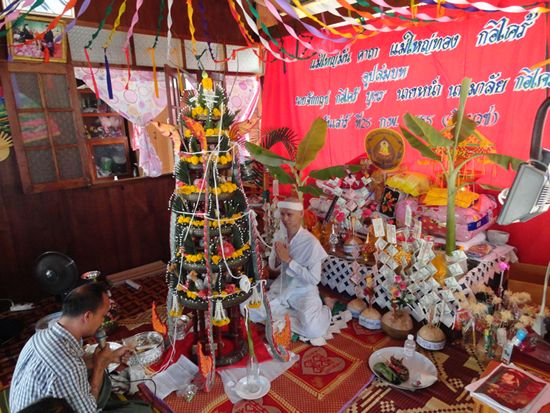
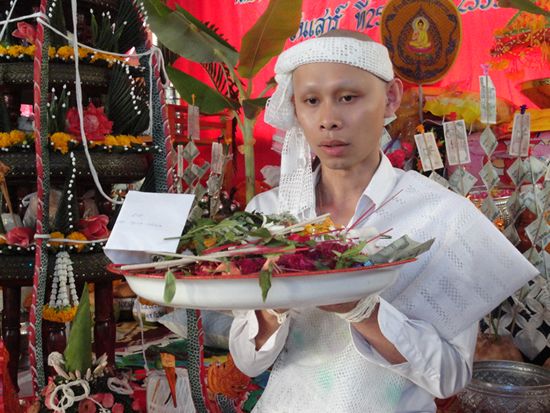
After sleeping at home for
one last night, Jack would change into orange (saffron) colored robes the next
day when he would enter the wat for 7 days of seated meditation and instruction
in Buddhist teachings attended closely by his father throughout the entire
time. (I don’t know about you but I have
a hard time sitting in a lotus position for 7 minutes - never mind, 7 days!!!)
After the first week, his
father would leave the temple and Jack would spend the next three weeks in
quiet contemplation and service to the Buddhist community. This would include the early morning ritual
of walking the streets of his hometown “taking robe and bowl” and collecting
alms to support the monastery.
Here’s a photo of Peter
outside the wat in Prae with
a group of new found friends.
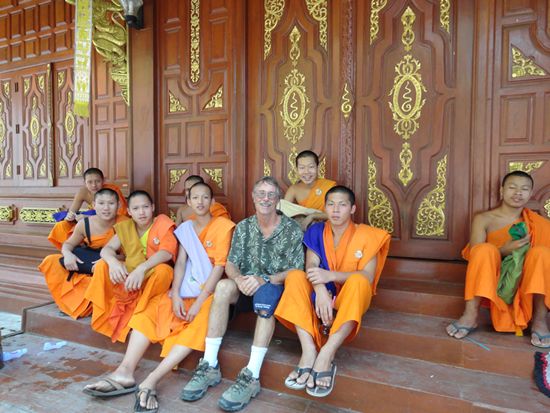
We were incredibly lucky to
have witnessed this rite of passage and to be welcomed so warmly by Jack’s
family. I think that they will remember
our visit just as vividly as we will. It
was a cross-cultural experience that opened eyes and fostered understanding on
both sides.